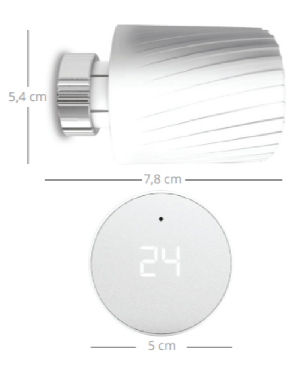Seasons, weather conditions, facility usage, there are dozens of reasons for temperature variations. Heating and cooling systems are essential, and have to deal with the daily fluctuations. The most cost-efficient way of dealing with the fluctuations is to use smart technologies, such as thermostatic valves which operate based on LoraWan Technology. The smart valve monitors and controls the temperature and humidity from a distance. The parameters can easily be modified online from a distance, or like the good old times by simply rotating the outer ring. Finally, the most advanced feature of the valve is the ability to detect a sudden decrease in external temperature, typically what happens after opening windows for the regular aeration necessary to reduce the internal levels of CO2. This sudden decrease triggers automatically the valve which stops the flow to prevent from warming unnecessarily, and reducing further the energy waste.
These Thermostatic valves are connected to the radiator by setting the old thermostat to high level and then removing it in order to replace it with the smart thermostatic valve where we can control the temperature by rotating it manually or by the application with the help of transmitting the data. These smart Thermostatic Valves will help for energy savings and the reduction of Co2 emissions.

Features of Smart Thermostatic Valves:
- It shows the target temperature with an LED display along with 2-digits 7 segments.
- These thermostatic radiators are compatible with 99% of all radiators and compatible with all LoRaWAN gateways.
- They can be easily integrated with existing BMS systems
- For indoor usage, there is an optimized antenna.
- Applicable for district-cooling applications
- Battery life is almost 10 years tested under different scenarios.
- digital temperature and humidity sensors which are embedded.
- For larger rooms,they can work with external temperature sensor
- In order to prevent manual interventions and changing schedules, there is a function called Child-lock.
- There is Open-window detection and configurable action plan to stop heating
- Allows for setting up notification and alarms
- Allows for multiple daily and hourly schedules
- Geolocation-based temperature control
- Manual, application or IoT platform temperature control
Applications: Used for Smart Buildings, Smart home ,Residential buildings, Commercial buildings, Energy optimisation and Environment monitoring